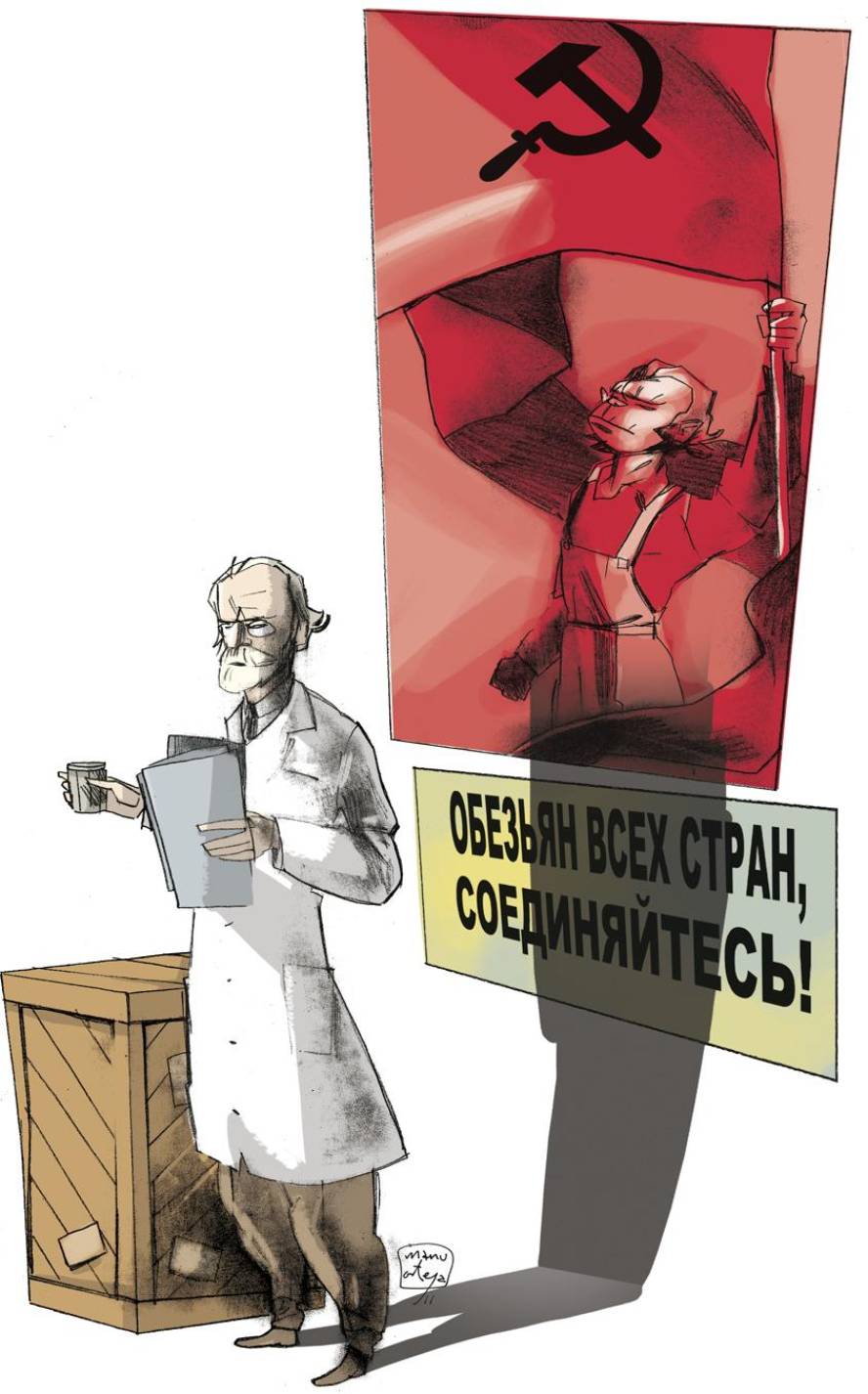Ilya Ivanov, to create a homicide
In Time magazine of August 16, 1926: "Among the physiologists gathered in Stockholm, Dr. Serge Voronoff, a prestigious glands transplant, has caused a great stir. Two weeks ago, Dr. Voronoff reported on the extrahani Algerian goats with three testicles. And he explained in this congress that Nora has incorporated into the adult female the sexual organs of a human female. In addition, with the help of Dr. Ilya Ivanov of Moscow, the monkey has been artificially fertilized with human hope. Nora will leave in January and the newborn will be biologically human. At the moment everything goes normally."
It was the experiment of Voronoff and Ivanov that created the revolt. But not only that, but in the same article they remembered another project underway by Ivanov, which was presented in the June 28 magazine as follows: "They will experience evolution at the Pasteur Institute in Kindia in French West Africa, crossing monkeys with humans."
Russian biologist Ilya Ivanov was a prestigious pioneer in artificial insemination. He developed the technique and showed that with a single sowing horse he could fertilize 500 mares. Along with the 20-30 fertilizations that could be normally obtained, the difference was remarkable. And Ivanov was very successful with this technique.
In addition, he created hybrids between different animals through artificial insemination. He crossed the zebra with donkey, bison and cow, antelope and cow, mouse and rat, mouse and aqueduct, rabbit and rabbit, rabbit and hare, etc. In view of the success of these hybridizations, in 1910, at the World Congress of Zoologists of Graz, he stated that it was possible to obtain, through artificial insemination, a hybrid between man and monkey.
At that time it was still an idea. But a decade later Ivanov was developing plans to implement this idea. In 1924 he presented his proposal to the Bolshevik government. Ivanov sold the project as an opportunity to prove that man evolved from the monkey. And he stressed that demonstrating that Darwin worked correctly would be a big blow against religion. If the project succeeded, in addition to increasing the reputation of Soviet science, propaganda against religion would be perfect. Ivanov obtained support and funding from the Government to start experiments in Africa.
Many prestigious scientists of the time also viewed the project with good eyes. F. thoroughly investigated the anatomy of anthropoid primates. G. British anthropologist Crookshank, for example, claimed that it should be possible for orangutans to cross with yellow beings, gorillas with blacks and chimpanzees with whites.
He was also supported by the Institut Pasteur in Paris and given permission to use the chimpanzees at his centre in Kinda, Guinea. He arrived in India in March 1926. The idea was to inseminate the females with human hope, but he could do nothing; all the chimpanzees in the center were immature.
He returns to Paris and spends the summer at the Pasteur Institute making plans to capture adult chimpanzees. Then he also participated in the experiment of Voronoff, fertilizing with his technique the chimpanzee Nora. And in November he returned to Guinea to capture the adult chimpanzees and experiment.
On February 14, 1927, he published that Time would not have children. Voronoff's report said: "After receiving the human ovaries, Nora had her period as regular as before. After artificial fertilization it stopped being menstrual. After 90 days of alleged pregnancy, he returned to the rule and had it regularly."
On 28 February, in Guinea, Ivanov artificially inseminated two females. And on June 25, a third. I had another experiment in mind: inseminating women with chimpanzee sperm. But she knew that local women would not be willing to do so, and she thought of doing so with the excuse of health screenings, saying nothing to women. The French government banned him from doing so. Ivanov wrote angrily to Moscow, reporting on the "primitive fears of Black people" and the "bourgeois prejudices of the French."
In July, Ivanov went to France with 13 chimpanzees, including the three fertilized. Two of them died on the way from Dakar to Marseille and the autopsies carried out on the same boat made it clear that they were not fertilized. The third died in France, and in that case there was no fertilization.
The remaining monkeys were sent to the primate center recently founded in Sukhumi (Abkhazi Soviet Republic). By then, Ivanov had clear what was the only possibility of getting a hybrid between man and monkey: inseminating voluntary Soviet women willing to bet on science.
In the spring of 1929 he obtained the authorization and financing of those experiments in Sukhumin. By then there were no lack of volunteers. In fact, the impact of Ivanov's experiments on the local and international press led to the arrival of eleven letters to the centre of Sukhumi, in which men and women offered themselves.
At that time in the center only had an adult monkey: Tarzan, a 26-year-old orangutan. But before reaching insemination, Tarzan died with a cerebral hemorrhage. "Orangutana has died. We will look for a substitute," Ivanov wrote to the woman who had agreed to catch Tarzan's sperm.
More monkeys arrived in the summer of 1930, but by then there were political changes and Ivanov began to receive strong criticism for his experiments. He was arrested in December 1930 and exiled to Kazakhstan. He died there in March 1932.
Volunteer letters continued to arrive in the kitchen. And, as the citizens later pointed out, there were "madmen who slept with the monkeys."






